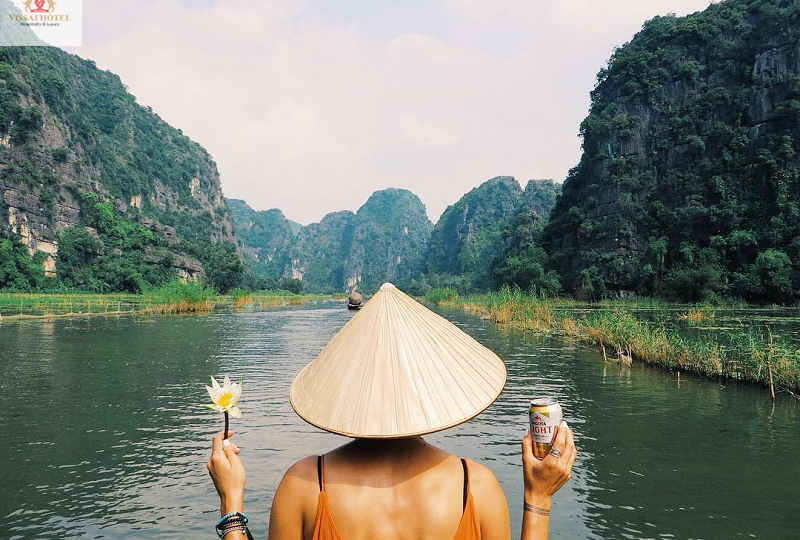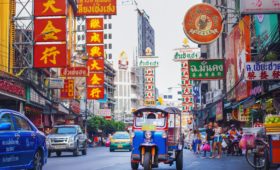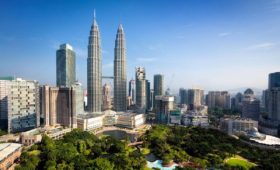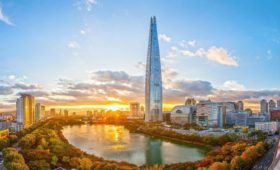Find out where to go in Vietnam and discover the best places to visit for your first time in Vietnam.
1. Ha Noi

Vietnam’s capital, Hanoi, is genuinely chaotic, but that just adds to its appeal. It’s one of Southeast Asia’s fastest-growing cities, with a unique blend of French and Sino-Vietnamese influences. Visitors to this dynamic city should be ready. It’s a place where crossing the street might mean taking your life into your own hands with automobiles, motorbikes, and tuk-tuks jostling for right of way in a city without road laws. It’s a swarm of activity at the best of times, absolute pandemonium at the worst.
Legend’s Corner is among the greatest locations to experience Hanoi’s craziness. The convenient Legend Beer restaurant is the best place to enjoy a beer while seeing the mayhem of rush hour just before sunset.
2. Ha Long Bay

It would be a pity to travel all the way to Vietnam and not see Halong Bay, which is without a doubt one of the country’s most well-known tourist attractions.
As you sail around Halong Bay, stopping at isolated beaches and villages along the way, you’ll find yourself in this idyllic environment of hundreds of sandstone mountains spread out into the water. It is one of Vietnam’s most picturesque locations and is unquestionably worthwhile the trip from Hanoi.
3. Sapa

One of my favorite destinations in Vietnam is Sapa. I may wander around the region in the cold highland wind among the stunning mountains and hills with rice terraces. The Black Hmong minority also calls Sapa home, and you will notice them as soon as your bus pulls into the city.
You could feel overrun by the number of individuals attempting to sell you items in Sapa because it is a popular destination for visitors to hang out and for the Hmong minority to make money. But don’t let that stop you from going to Sapa because it has a lot to offer, including a one-of-a-kind experience, sleeping in a homestay with locals in the highlands, trekking through the rice paddies, and riding a motorcycle through Sapa’s hills.
4. Ninh Binh

One of Vietnam’s most picturesque destinations is Ninh Binh. The UNESCO World Heritage Site Trang An is also visible from the 500 steps of Mua Caves, in addition to stunning vistas.
Trang An offers visitors the chance to take a 3-hour boat excursion with a local guide through imposing limestone karsts. For a memorable adventure, explore stunning secret temples, view the set from Kong: Skull Island, and squeeze beneath hundreds of meters of river caverns. Most significantly, Mua Caves Ecolodge provides you the opportunity to go to sleep listening to frogs and without a single automobile horn!
5. Hue

Nothing better encapsulates Hue’s rich history than the vast Imperial City of Hue, a fortified complex of royal structures. When the Nguyen Dynasty, the final of the imperial dynasties to rule Vietnam, unified the country in 1802, this served as the focal point of authority. Even though the Vietnam War caused damage to many of the Imperial City’s structures, it will still take you a few hours to visit all the temples and palaces in their right order.
The graves of the emperors, which are dispersed along the Perfume River south of Hue, are the next most visited attractions after the Imperial City (also known as the Citadel).
Although many people like to visit them as part of a boat excursion, you may take a cab or a bike there. If you’re traveling down the river, also look out for the stunning Thien Me Pagoda.
Hue is not a particularly big city, at least not from the viewpoint of a visitor, so you can simply stroll through the heart of it. Only a few days are required to see the main attractions and do some exploring. Hue has a stop on the major north-south railroad and is easily accessible by bus to locations like Hoi An.
6. Hoi An

One of Vietnam’s most picturesque cities is Hoi An. It is a historic port city that served as a significant commerce hub for Southeast Asia between the 15th and 19th centuries CE.
Each year, a huge number of visitors from all over the world come to this old town because of its stunning architecture, which combines both local and foreign influences. Even though it might get congested at times, especially at night near the river, Hoi An is simply too stunning to pass up.
7. Da Nang

The midway point between Ho Chi Minh City in the south and Hanoi in the north is Da Nang. It is Vietnam’s fourth-largest city. Most visitors choose to stay here primarily because of its closeness to the well-known My Khe Beach, Lang Co Beach, Hoi An, and My Son, in addition to certain retail attractions and historical sites. Da Nang is known for its peaceful, cold seas, and its 30-kilometer-long beach.
The palm-lined Lang Co Beach is surrounded by the inviting, inviting ocean water that laps into the white dunes. It’s a peninsula with a beach on one side and a glistening lagoon on the other. Despite several new hotels appearing in recent years, the region is still relatively underdeveloped. Water sports including fishing, water skiing, scuba diving, and sailing are all quite popular here.
In 2018, the Golden Bridge, a brand-new structure, was completed and began to represent Danang. The bridge gains notoriety on a worldwide scale as well thanks to the influx of thousands of visitors from other countries who want to visit Vietnam’s most renowned bridge. In addition, its stunning architecture served as a model for several buildings throughout the globe.
8. Ho Chi Minh City

Ho Chi Minh City is a contemporary metropolis rich in history and tourist attractions. It’s a terrific site to begin your trip to Vietnam and gain a sense of the culture there.
The city itself is just like any other major metropolis in Southeast Asia; there are traffic jams, a ton of nightlife options, and a ton of things to do for tourists. You should definitely go to the Vietnam War Museum, which is also located there.
9. Phu Quoc

The largest island in Vietnam is Phu Quoc. It lies in the far southwest, closer to the Cambodian shore than the mainland of Vietnam. I was looking forward to some beach time because Ho Chi Minh City was so hot and busy. Although ferries are also an option, we came by plane. As a Special Economic Zone, the island allows visitors to remain without a visa for 30 days.
For our week-long break inside a holiday, Phu Quoc was ideal. We delighted in pristine beaches, amusement centers, a cutting-edge aquarium, and zoo excursions. The Bee Farm was a particular favorite of my daughters, and there was even a night market for those occasions when we realized we missed the city after all. Delicious cuisine is served, and there are many selections.
10. Mui Ne

A well-known seaside town called Mui Ne is well-known for its charming fishing village and fantastic adventure activities. Mui Ne is a strange town in Vietnam that, unlike what the majority of tourists may think, is full of beaches with golden sand and a paradise for thrill-seekers.
You may engage in a variety of water activities here, including windsurfing, sailing, and kitesurfing. Visit White Sand Dune, where residents and adrenaline addicts like jumping on quad bikes. The greatest sunset in town is at Red Dune, so go there next. You may find some vendors selling coconuts and regional delicacies close to the parking lot, so be sure to stock up on drinks before climbing the dune!
11. Da Lat

Dalat is a delightful little discovery. The cold spring temperature Dalat delivers will be a wonderful break after spending your days sweating profusely. You’ll be surprised and enchanted by Dalat’s residences. The European vibe is lovely. Everyone may find something to do in Dalat, including those who wish to unwind, go on an adventure, discover the local culture, and more. Dalat is a fantastic destination for single people, couples, and families.
There are many things to do in and near Dalat, but riding a motorbike or scooter to or from Dalat may be the most exciting. The landscapes created by the picturesque green hills and valleys will stick with you for a very long time.
12. Mekong Delta

The Mekong River, the 12th longest river in the world, travels from the Tibetan Plateau through six nations—China, Myanmar, Laos, Thailand, Cambodia, and finally Vietnam—before coming to rest in the Mekong Delta.
A labyrinth of waterways, the Mekong Delta is teeming with life, from stunning mangrove forests to verdant paddy fields. Numerous cities and villages in the region depend on the Mekong River’s abundant resources for their existence.



